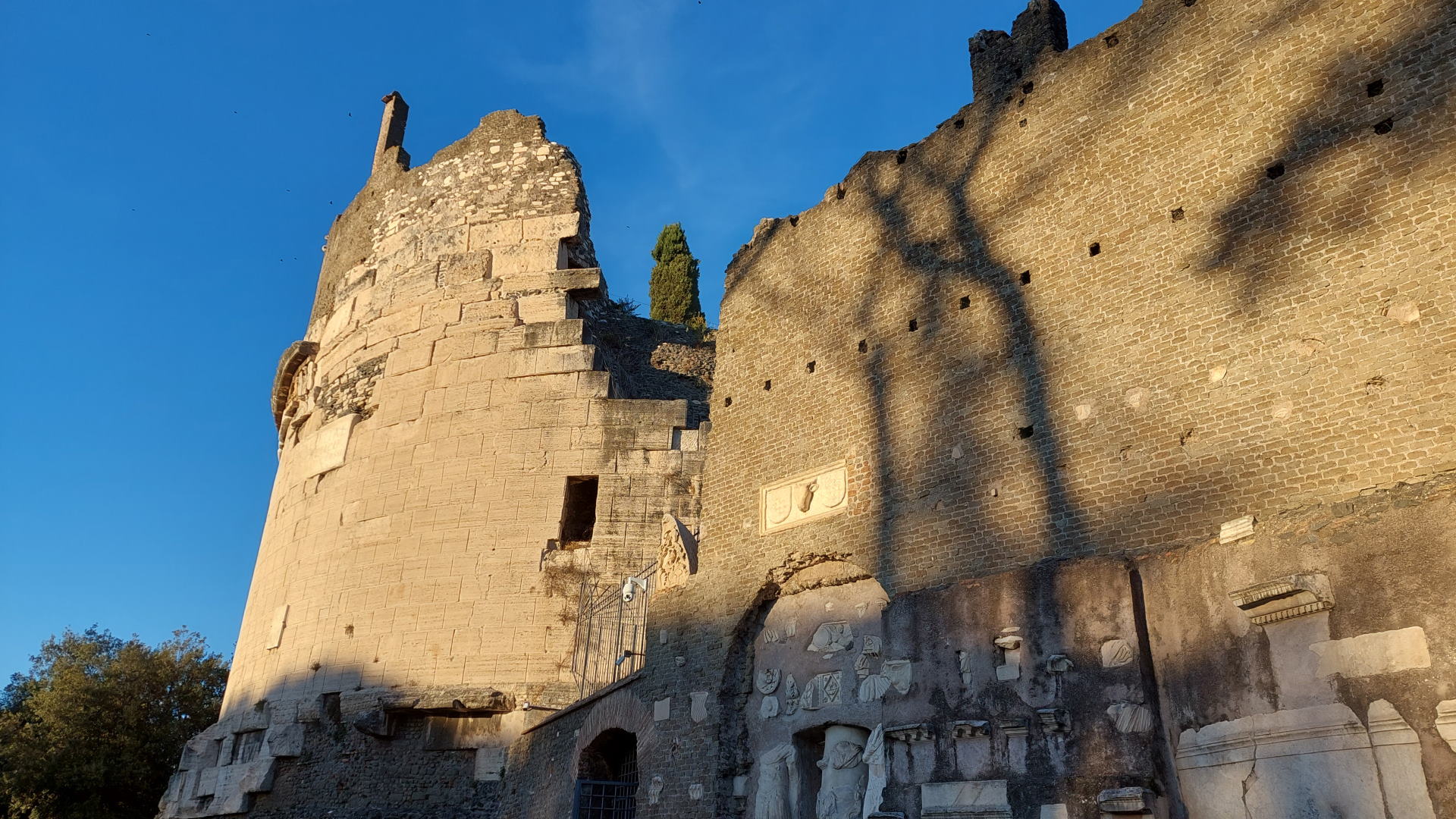
Elegant and imposing, and 11 meters high, it is one of the most iconic landmarks on the ancient Appian Way, along which it stands out at the height of the 3rd mile, a short distance from the complex of Maxentius.
The tomb was built during the reign of Augustus, in the years between 30 and 10 B.C., for the noblewoman Caecilia Metella, as indicated in the large funerary inscription walled on the top of the mausoleum. Daughter of the Roman consul Quintus Caecilius Metellus, Caecilia was probably also the daughter-in-law of the famous Licinius Crassus, a leading figure in Roman political life and a member of the first triumvirate along with Caesar and Pompey. The wealth and prestige of the family to which she belonged explain the mausoleum’s dominant position and its monumentality.
The tomb is reminiscent, in reduced size, of the Mausoleum of Augustus. On the outside, a mighty square basement – preserved only in part – supports a tall cylindrical body covered with travertine slabs. This cylinder is crowned with a marble frieze decorated with garlands of flowers and fruits between bucrania, or ox skulls, which explains the name “Capo di Bove” (Oxen’s head) given to the locality in later centuries. The frieze is interrupted by a high relief with a trophy of weapons and a captive barbarian with his hands tied behind his back. Caecilia’s body was in a conical burial chamber, lined with bricks and open at the top with an oculus.
In the early 14th century, the mausoleum was incorporated into the castle built by the Caetani family (Castrum Caetani) and transformed into the main tower of their fortification. Their palace, with its crenellated walls and beautiful mullioned windows, now houses the “Museum of the Appian Way”, a collection of statues, sarcophagi, inscriptions and reliefs from the rich funerary monuments that overlooked the road. The Castrum Caetani included the church of San Nicola a Capo di Bove, the only evidence of Cistercian Gothic architecture: the exterior structure and the apse are preserved today.
Information
1 October to 31 October from 9 to 18.301 November to 28/29 February from 9 to 16.301 March to 31 March from 9 to 18.301 April to 30 September from 9to 19.15Last admission 30 minutes before closing.Closed Monday, 25 DecemberFor updates and guidelines, please visit the official website.> Online tickets
 Condividi
Condividi
Location
To find out about all accessibility services, visit the Rome accessible section.











































